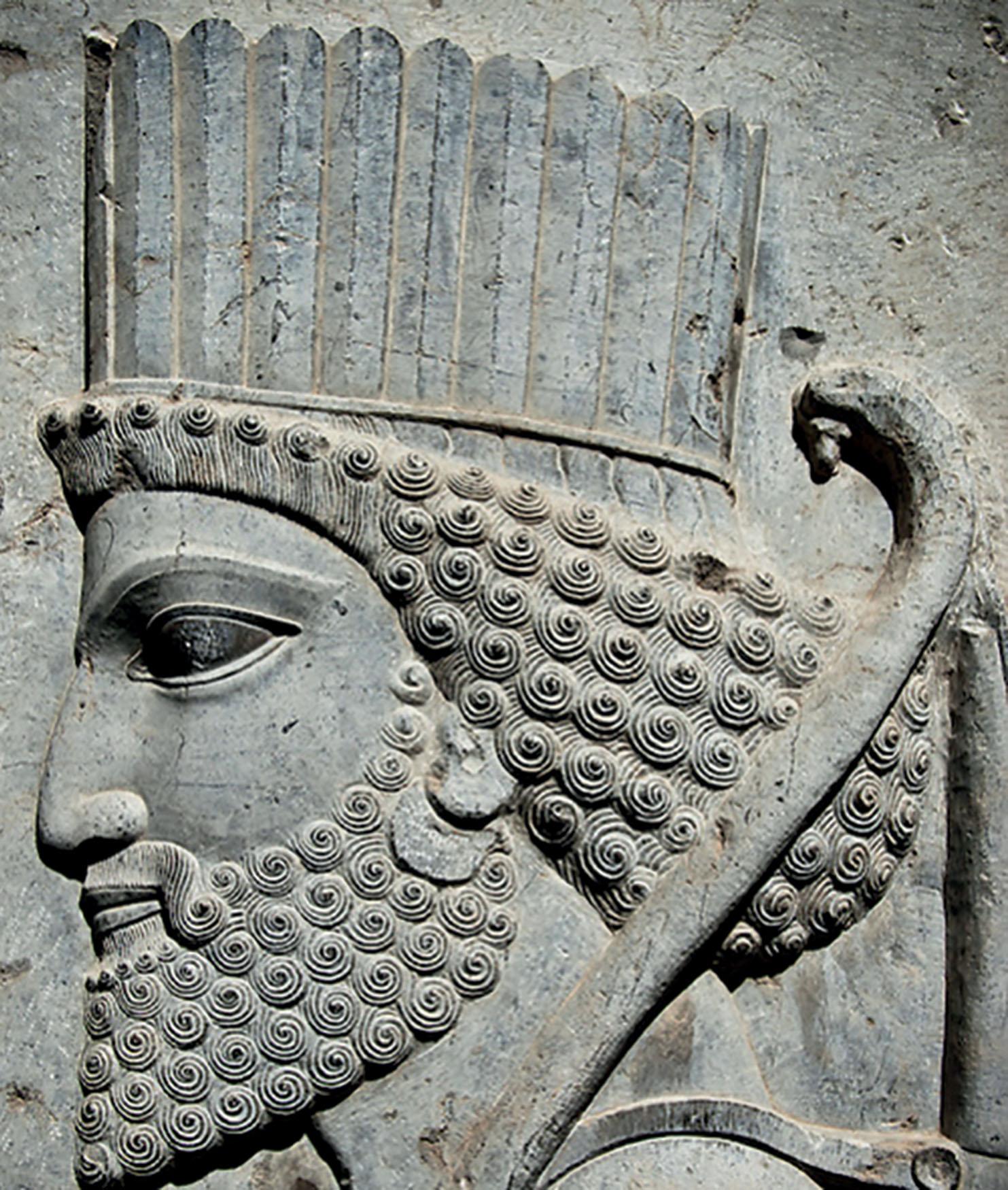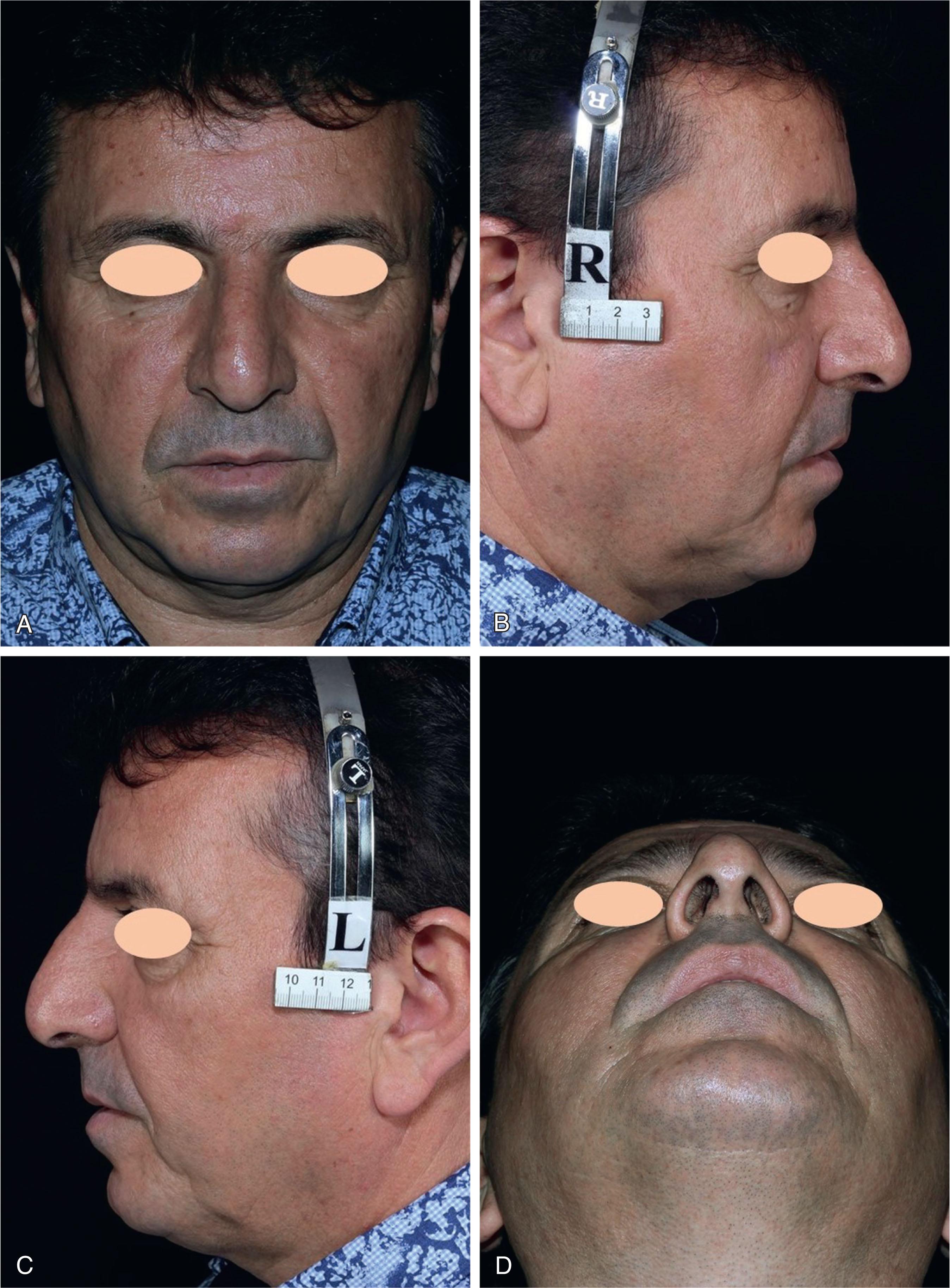Physical Address
304 North Cardinal St.
Dorchester Center, MA 02124
The Persian nose is characterized by a distinct shape and appearance that has been retained across several millennia. Constructed during the reign of the Achaemenid Empire 2500 years ago, the faces of stone engravings on Southern Iran’s Persepolis palace invariably include the typical large hump and droopy tip of Persian noses ( Fig. 60.1 ). These features persist today ( Fig. 60.2 ), which is evidence that the Persian ethnic nose has not considerably changed in thousands of years.


The Persian race is considered to be Caucasian and Indo-Iranian, though they historically have larger noses compared to these ethnicities in other parts of the world. In an analysis looking at the geographic distribution of nose shapes and sizes across the world, we previously reported that Middle Eastern noses are largest, and the nasal dorsal projection decreases in size when moving east or west. Moreover, from the eastern countries of Asia such as China and Japan to the most western parts of the American continent, the nasal dorsum is less prominent, although the width of the noses may become wider in Black or American Hispanic populations. We suggest that the only other ethnic group that may have a similar-sized nose to Middle Easterners is Native Americans.
Modern rhinoplasty in Persia originated in 1960 and was first performed by Dr. Syros Osanlou, a French- and American-trained pioneer of plastic surgery. In the early years of aesthetic surgery, many procedures including rhinoplasty were not conventional throughout the world, and certainly not in the Middle East. However, the demand for rhinoplasty gradually increased and became more popular in this region, particularly in women, as prospective patients saw more and more positive aesthetic outcomes. Specifically, removal of the hump and correction of the droopy tip on the noses of Middle Eastern females made their faces more feminine and generally produced substantial aesthetic improvements. Coupling the evolution of rhinoplasty techniques and an increasing population in the area, the demand for these procedures continues to rise, particularly in this part of the world compared to the rest of the globe. Indeed, some media members call Iran the world capital of rhinoplasty.
The reasons that rhinoplasty is so common in Persia are multifold and include cultural reasons. Published articles in the media have mentioned that high demand for rhinoplasty in this area is substantially attributed to imitation of Hollywood stars or the use of scarves, which exaggerate the size and prominence of the nose in the center of the face. Beneath all this, we believe the underlying reason behind the popularity of rhinoplasty in this population is the actual size—the physical dimensions—of the nose itself.
Most Persian rhinoplasty candidates are looking for a natural nose with less skeletal reduction and elevation of the tip. However, there are minorities who insist on having a deeper dorsum and higher tips. Patients have expectations of postsurgical outcomes that include a straighter dorsum and open nasolabial angle.
Become a Clinical Tree membership for Full access and enjoy Unlimited articles
If you are a member. Log in here